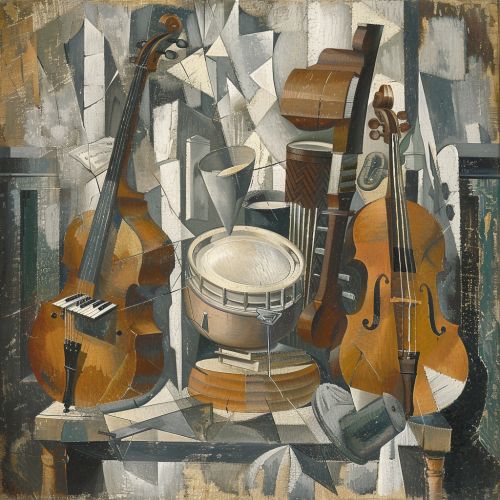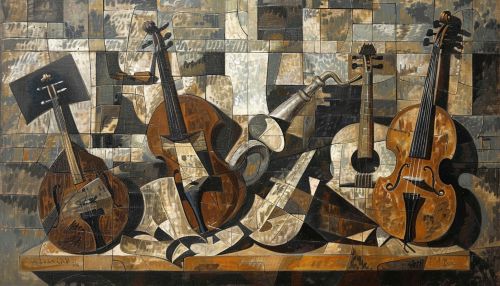Georges Braque
Early Life and Education
Georges Braque was born on May 13, 1882, in Argenteuil, a suburb of Paris, France. His family moved to Le Havre in 1890, where his father and grandfather were both house painters. Braque initially followed in their footsteps, apprenticing as a house painter and decorator. He attended evening classes at the École des Beaux-Arts in Le Havre from 1897 to 1899. In 1900, Braque moved to Paris to study at the Académie Humbert, where he met Marie Laurencin and Francis Picabia.
Early Artistic Career
Braque's early work was influenced by the Fauvist movement, characterized by bold colors and simplified forms. He exhibited his Fauvist works in the 1906 Salon des Indépendants. However, his style began to evolve after he encountered the work of Paul Cézanne at the 1907 Salon d'Automne. Cézanne's emphasis on structure and form had a profound impact on Braque, leading him to explore new artistic directions.
Development of Cubism
In 1907, Braque met Pablo Picasso, and the two artists developed a close friendship and professional collaboration. Together, they pioneered the Cubist movement, which sought to depict objects from multiple viewpoints to represent their three-dimensionality on a two-dimensional canvas. Braque's work during this period was characterized by fragmented forms, geometric shapes, and a muted color palette.


Analytical Cubism
Between 1908 and 1912, Braque and Picasso developed what is known as Analytical Cubism. This phase of Cubism focused on deconstructing objects into their basic geometric components and reassembling them in a way that challenged traditional perspectives. Braque's paintings from this period, such as "Violin and Candlestick" (1910) and "The Portuguese" (1911), exemplify the analytical approach, with their intricate interlocking planes and subdued color schemes.
Synthetic Cubism
Around 1912, Braque and Picasso transitioned to Synthetic Cubism, which incorporated elements of collage and mixed media. This phase emphasized the combination of different textures and materials, such as newspaper clippings, wallpaper, and fabric, to create complex compositions. Braque's "Fruit Dish and Glass" (1912) and "Bottle, Newspaper, Pipe, and Glass" (1913) are notable examples of Synthetic Cubism, showcasing his innovative use of materials and techniques.
World War I and Later Work
Braque's artistic career was interrupted by World War I, during which he served in the French army. He was severely wounded in 1915 and spent two years recovering. After the war, Braque's work took on a more personal and introspective quality. He continued to explore Cubist themes but also incorporated elements of Surrealism and Classical Realism. His later works, such as "The Studio" series (1949-1956), reflect his ongoing interest in the relationship between objects and space.
Legacy and Influence
Georges Braque is regarded as one of the most important figures in modern art. His contributions to the development of Cubism had a profound impact on the course of 20th-century art. Braque's innovative techniques and exploration of form and perspective influenced numerous artists, including Juan Gris, Fernand Léger, and Henri Laurens. His work continues to be celebrated for its intellectual rigor and aesthetic complexity.
